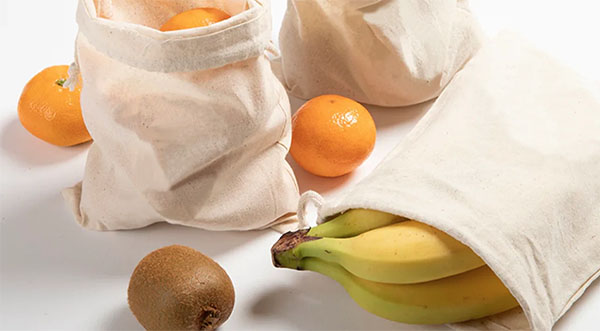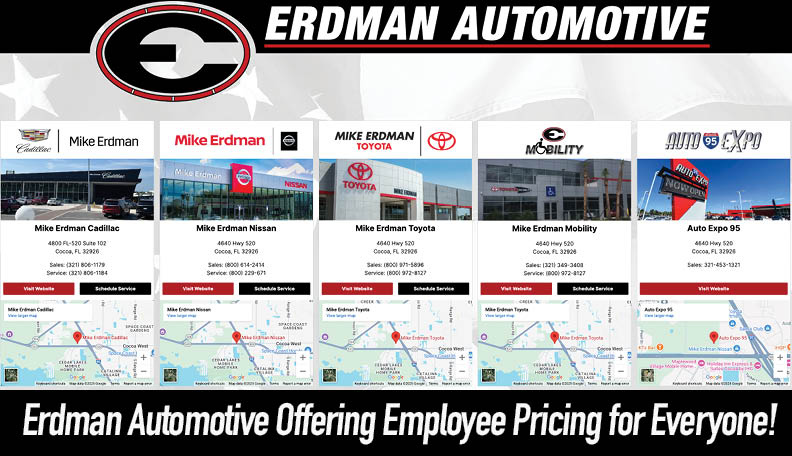Eco-Chic Packaging: Embracing Sustainability with Shredded Paper and Calico Bags
By Space Coast Daily // December 9, 2023

Packaging, once an overlooked aspect of commerce, is now a focal point for businesses seeking to align their practices with ecological responsibility. This shift is not only a moral imperative but also a strategic choice as consumers increasingly demand eco-friendly alternatives.
In this blog post, we will explore the concept of eco-chic packaging, delving deeper into the utilization of calico bags and shredded paper to redefine sustainability in the packaging industry.
Eco-Friendly Packaging:
Traditional packaging materials, notorious for their environmental impact, are being reconsidered in the wake of a burgeoning demand for eco-friendly alternatives. Plastic and Styrofoam, once staples in the packaging industry, have given way to innovative and sustainable materials that not only serve as effective packaging solutions but also minimize the ecological footprint of businesses.
Raw Materials & Cosmetic Packaging Australia is your go-to destination for wholesale raw materials for cosmetics, exceptional customer service, competitive prices, and eco-friendly practices.
Shredded Paper: Transforming Waste into Packaging Gold:
In the pursuit of sustainable packaging, shredded paper has emerged as an ingenious solution, repurposing a byproduct of other manufacturing processes to minimize waste and offer eco-friendly alternatives.
1. Waste Reduction and Recycling:
The shredded paper contributes significantly to waste reduction by providing a second life for paper that might otherwise end up in landfills. As businesses increasingly adopt circular economy principles, repurposing shredded paper for packaging aligns with the overarching goal of minimizing environmental impact.
2. Protective Cushioning:
Beyond its eco-friendly attributes, shredded paper serves a practical function in providing effective cushioning for fragile items during transit. This not only minimizes the risk of damage to products but also eliminates the need for non-biodegradable alternatives like bubble wrap or Styrofoam peanuts, further reducing the ecological footprint of packaging.
3. Cost-Effective Solution:
Shredded paper, often a byproduct of other manufacturing processes, presents a cost-effective solution for businesses looking to embrace sustainability without inflating packaging budgets. Its availability at a lower cost compared to traditional packaging materials adds a compelling financial incentive for businesses to integrate shredded paper into their sustainable packaging strategies.
4. Aesthetically Pleasing and Customizable:
Shredded paper, far from being a mundane packing material, offers an aesthetically pleasing and customizable solution. Businesses can easily color the shredded paper to match branding themes or product aesthetics, enhancing the overall presentation of the package. This level of customization adds a touch of sophistication to eco-friendly packaging, dispelling the notion that sustainable practices compromise visual appeal.
Calico Bags: A Sustainable Fashion Statement:
Calico bags, also referred to as cotton bags, have emerged as an aesthetically pleasing and eco-friendly alternative to conventional plastic bags. Crafted from unbleached cotton, calico bags offer a myriad of benefits that extend beyond their visual appeal, making them a cornerstone of sustainable packaging.
1. Biodegradability and Eco-Friendly Attributes:
Calico bags stand out for their inherent biodegradability. Composed of natural fibers, these bags decompose organically, leaving no harmful residues in the environment. Unlike their plastic counterparts, which can persist for hundreds of years, calico bags break down within months, mitigating the long-term impact on ecosystems.
2. Reusable Nature:
The reusability of calico bags is a distinctive feature that aligns with the principles of sustainability. Unlike single-use plastic bags, which contribute significantly to pollution, calico bags can withstand multiple uses. This inherent durability not only makes them an eco-conscious choice for consumers but also positions them as a symbol of responsible consumerism.
3. Customization and Branding:
Calico bags offer a unique canvas for customization, allowing businesses to showcase their commitment to sustainability through branding. Companies can incorporate eco-friendly messages, logos, or other designs on the bags, effectively communicating their dedication to environmentally conscious practices. This customization not only reinforces brand identity but also serves as a powerful marketing tool.
4. Versatility:
The versatility of calico bags is a significant advantage, accommodating various shapes and sizes to cater to diverse packaging needs. From small, drawstring pouches for boutique items to larger tote bags for groceries, calico bags provide a sustainable packaging solution across a wide spectrum of industries.
The Ecological Toll of Conventional Packaging
The conventional packaging methods that have long dominated the market come with a significant ecological toll. In this exploration, we delve into the various environmental issues associated with conventional packaging, shedding light on the hidden costs that have been overlooked for far too long.
1. Single-Use Plastics: A Global Menace:
At the forefront of the ecological crisis posed by conventional packaging is the pervasive use of single-use plastics. From grocery bags to food wrappers, the convenience offered by these materials comes at a staggering cost to the environment. The non-biodegradable nature of plastics means that they persist in landfills and oceans for centuries, contributing to pollution, endangering marine life, and disrupting ecosystems.
The call for reducing single-use plastics has gained momentum globally, with consumers and businesses alike seeking alternatives that minimize the environmental impact of packaging.
2. Excessive Resource Consumption:
Conventional packaging often involves the use of resource-intensive materials such as virgin plastics, contributing to deforestation, pollution, and depletion of natural resources. The extraction and processing of these materials release greenhouse gases into the atmosphere, exacerbating climate change.
Additionally, the energy required to manufacture and transport conventional packaging materials adds to the overall carbon footprint, further underscoring the unsustainable nature of traditional packaging practices.
3. Limited Biodegradability and Landfill Overflow:
Many conventional packaging materials lack true biodegradability, meaning they do not break down naturally and return to the environment. Instead, they accumulate in landfills, occupying valuable space and releasing harmful substances as they degrade. The overflow of landfills poses a severe threat to local ecosystems, contaminating soil and water sources.
The persistent presence of non-biodegradable packaging exacerbates the global waste crisis, prompting a reevaluation of packaging practices to align with principles of sustainability.
4. Toxic Chemicals and Environmental Contamination:
The production and disposal of conventional packaging often involve the use of toxic chemicals. These substances can leach into the environment, contaminating soil, water, and air. This contamination poses risks to human health and disrupts the delicate balance of ecosystems, with far-reaching consequences for biodiversity.
From plasticizers to colorants and preservatives, the chemical components of conventional packaging demand a closer examination to understand their long-term effects on the environment.
End Note
The adoption of eco-chic packaging is not merely an industry trend; it is a transformative journey towards a more sustainable and responsible future. The choices we make in packaging today will resonate far beyond the confines of a landfill or the lifespan of a product. They shape the narrative of our commitment to preserving the environment for generations to come. As businesses and consumers embrace eco-chic packaging, they participate in a collective effort to redefine the relationship between commerce and the planet, where sustainability is not just an option but a fundamental ethos guiding every packaging decision.












